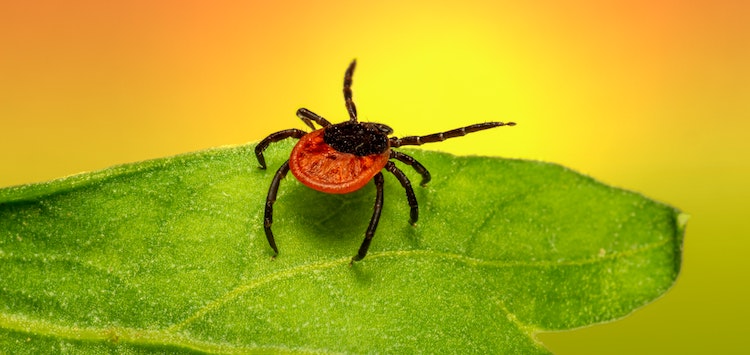Although Lyme disease has been prevalent in New Jersey for many years there continues to be a number of questions and misconceptions circulating about the disease, its hosts and how its transmitted to humans. The following information is an attempt to answer these questions and clear up the prevalent misconceptions about the disease.
The Lyme disease bacterium, Borrelia burgdorferi, is spread through the bite of infected ticks. Not all ticks are able to spread the disease, only the blacklegged deer tick, Ixodes scapularis, is known to transmit the disease in New Jersey. Its important to know how the tick becomes infected to fully understand the process of transmission. In New Jersey, the host species most likely to transmit the disease to ticks is the white-footed deer mouse, Peromyscus leucopus, not to be confused with the house mouse, Mus musculus, which is more commonly found in your home. Larva of the tick feeding on infected white-footed deer mice account for about 90% of the spread of the disease. The white-footed deer mouse is, for the most part, a forest dweller. We can follow spikes in the mouse populations that are directly associated to years of peak acorn production. Since deer mice are the main reservoir and transmission host of the disease, as their population increases, we see directly correlated increases in the rate of infection. Other hosts include the Eastern chipmunk and shrews, although these are much less common.
Up to this point note that there has been no mention of the White-tailed deer in this equation. While the white-tailed deer has an important role is spreading the infection the deer itself is not infected by nor a carrier of the disease. The white-tailed deer’s role is in the spread of the tick itself. A single deer can harbor thousands of blacklegged deer ticks in all stages of development, larva, nymph and adult, at one time. Fawn mortality studies have shown it is not unusual to observe 500 plus nymphs in the ears of a single fawn. Ticks have a very limited range and are confined to a limited area. This is where the White-tailed deer comes in to the transmission. With a range of one square mile and over lapping ranges the tick infected deer becomes the perfect carrier to spread the infection. It is very easy to correlate spikes in the rate of Lyme disease infections in humans to increased deer densities caused by limiting the harvest of deer in these areas. Municipalities and county parks that have either closed areas to all harvest or greatly reduced the harvest of deer stand out as prime examples of these spikes. The white-tailed deer has also adjusted to living in urban areas throughout the state. Green ways, lush lawns, shrubs and flowers all are excellent food sources for deer and they are very willing to take advantage of them allowing for the spread of infected ticks into these areas.
If we look at ways to control Lyme disease and its spread by ticks, mice and deer one clear route to control the disease is to manage the white-tailed deer population in our parks and urban areas through the harvest of deer and controlled populations. If we follow the rates of infection by counties, we find that the highest rates are in Morris, Hunterdon and Monmouth all of which contain large areas with reduced or closed harvest of deer. Counties with high tick populations but controlled deer populations, Cape May, Salem and Camden are on the other end of the spectrum. The New Jersey Department of Health records show that 2017 with a total of 5,029 confirmed cases of Lyme disease, was the highest yearly recorded number of cases in the past 20 years.

